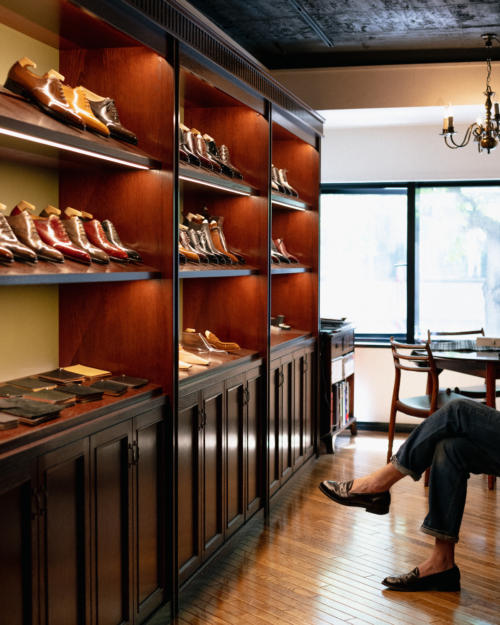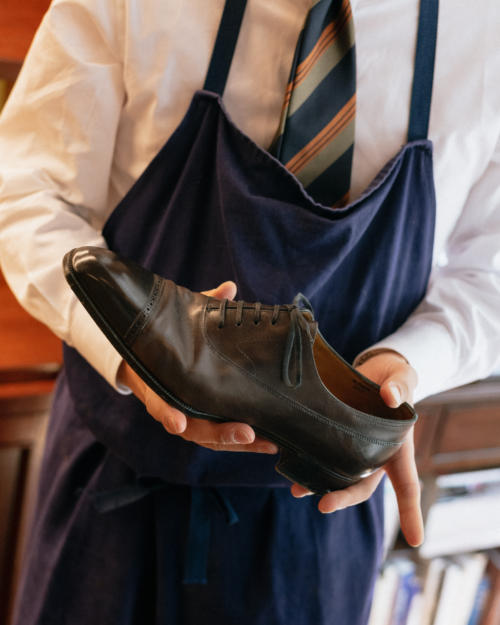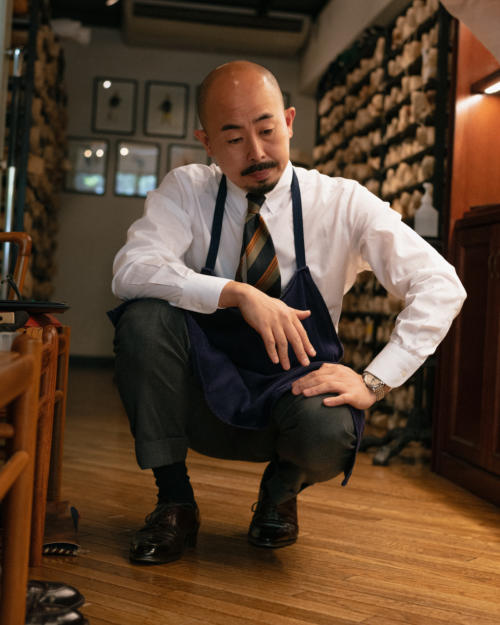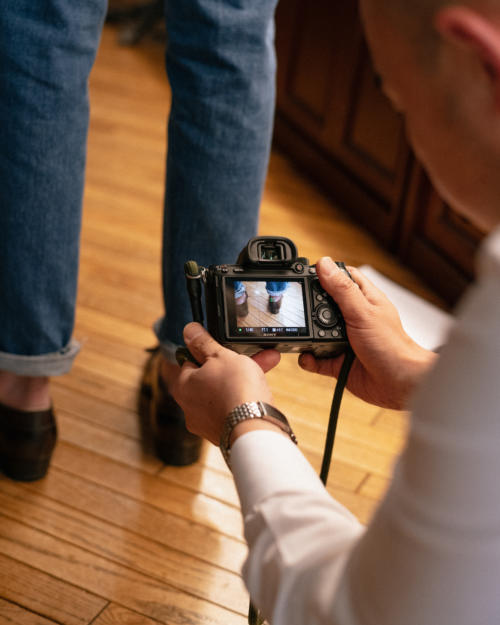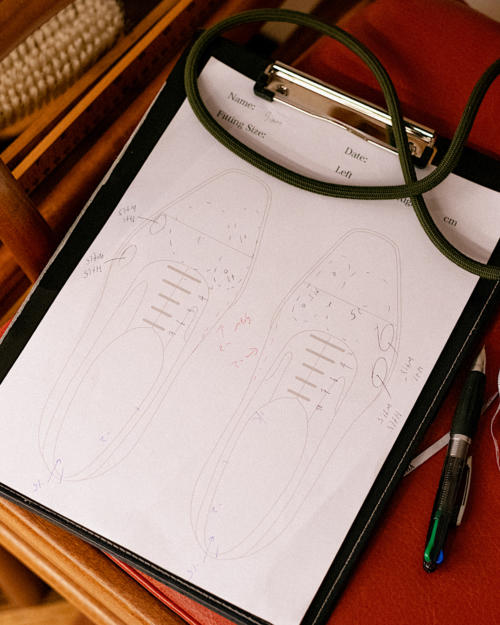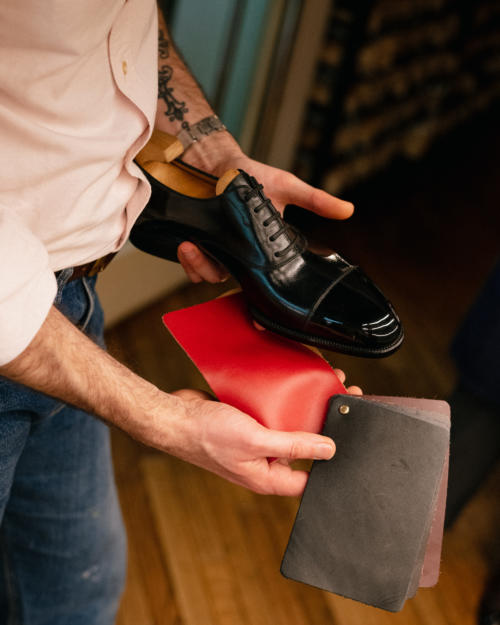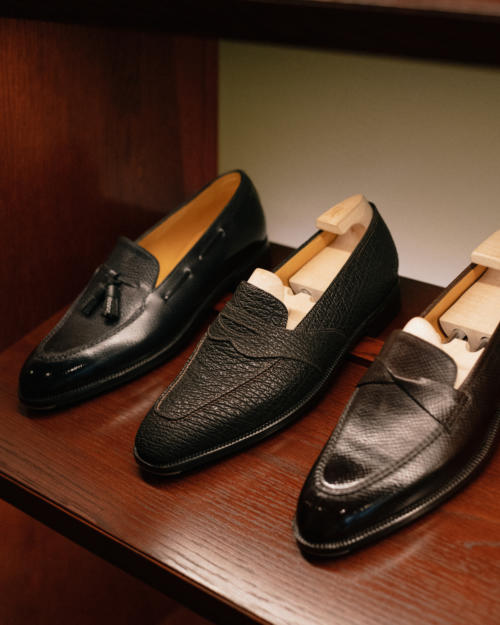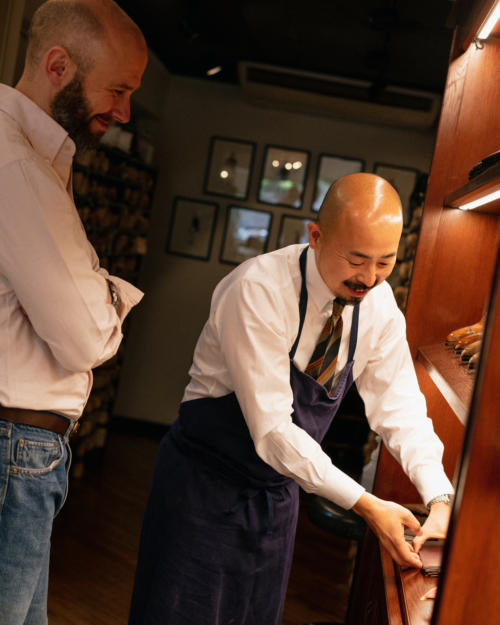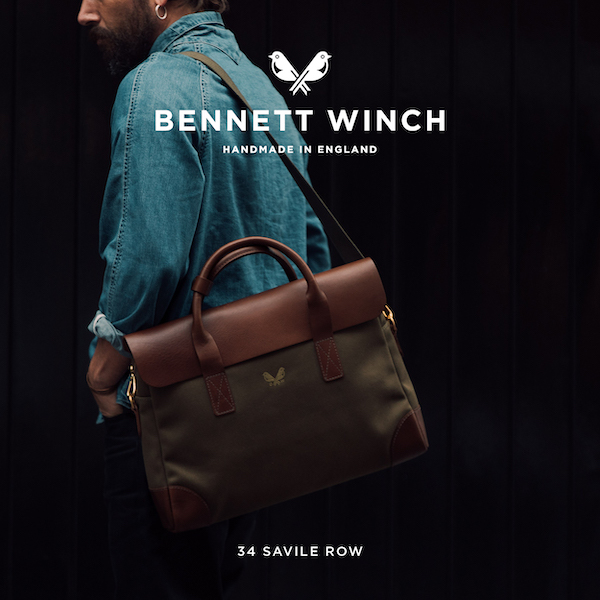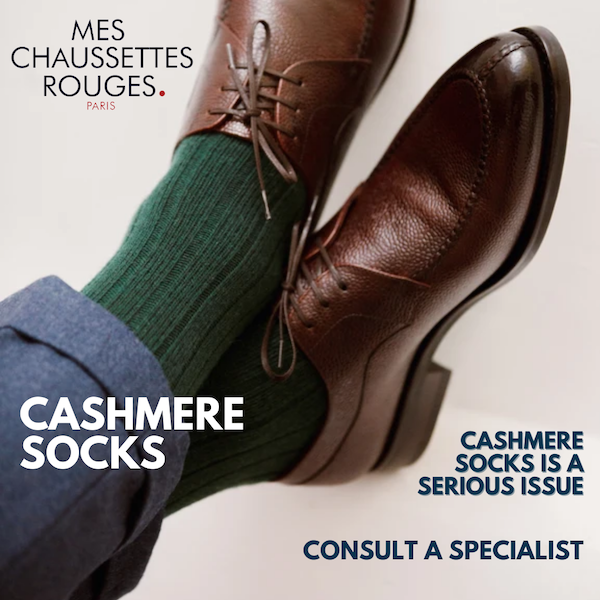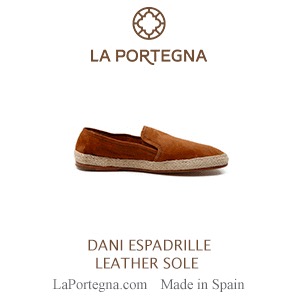Sticking with Yohei: Commissioning black oxfords
Readers will be aware that I have become a little sceptical about bespoke shoes in recent years. As I detailed in the article ‘Are bespoke shoes worth it?’ my experiences have been a little patchy, and looking back on 13 years of commissioning, it’s hard to make a good case for them except in certain circumstances.
One experience that pushes against that, however, has been working with the Japanese shoemaker Yohei Fukuda. The shoes he made for me fit as well as any other bespoke I’d had, despite not even having a fitting (and therefore, not even really being bespoke).
As I never tire of saying with bespoke clothing, it makes a world of difference if you can see and try the product first - it does that crucial but often underestimated thing of closing the gap between the customer’s and the maker’s expectations. With Yohei I was able to do that, fitting on his ready-made shoes both to inform the fit and to understand how the shoe would look and feel.
So when I was in Japan a couple of months ago, I took my first pair of shoes to him to analyse, and commissioned a second.
I’m also writing this now because he is making one of his rare trips to London at the end of this week - he’ll be at Hackett on Savile Row on June 30 and July 1, before also then travelling to Geneva on July 7 and 8.
Given how well my first pair of shoes fit, it was interesting to see what changes Yohei proposed making for the second.
There were quite a few, even if they were only a matter of 1mm or 2mm here and there. For example, my big toe is quite tall at the joint, while the other toes are rather lower. This creates some hollowness on the shoe above those other toes.
Yohei proposed reducing this space; I was hesitant because I knew ready-made shoes that are too low in this area bite rather on my big toe. Yohei considered and amended, but still removed 2mm from that area on my left foot and 2.5mm on my right, while adding 1mm and 1.5mm above the big toes respectively. You can see that marked in the image below.
Now space in this area where the foot flexes is always going to move around - you’re not going to create a sculpted shape for the joints, as the leather is too soft. But changing the contours of the area will make a difference.
(As with my potential pain points, I know this from experience - which is one reason why bespoke shoes make most sense in the long term, ideally with one maker.)
The other marks on that fitting sheet indicate reductions in the last through the front of my arch (2mm less on each side), 2mm less in the top line around each ankle, and a slight narrowing at the heel.
The numbers alongside the laces indicate how large the gap was between the facings of the shoe when they were laced up. The two sides shouldn’t be closed - because that’s your room for adjustment during the day, or over the years - but aesthetically you don’t want them too far apart.
These changes made me reflect on what I thought was a ‘good fit’ given there were so many little things that could be improved.
It really comes down to a shoe that you can wear all day, not suffer any pain, and look good doing it. Some guys wear really big shoes as it feels more comfortable, but they sacrifice the look. Having good support for your feet is important too, and stops them being tired, but for me that’s usually been a bonus.
It made me realise that the bar I set for bespoke is actually pretty low - and perhaps some makers push the look or the fit details too far, trying to perfect the shoe but in the process undermine that simply good fit.
My second pair of Yohei Fukuda shoes will be black cap-toe oxfords. A different toe shape - softly rounded, shown above - but otherwise very similar to my first pair, just without any broguing and a bright red lining (I had that on my Cleverley ‘imitation’ brogues’ and really liked it).
That Cleverley pair is my other black bespoke pair, but they are quite a pointy style, and that combined with the broguing makes them less versatile. The shape is a little too much for anything but smart suits and jackets, and the broguing prevents them being worn with things like black tie.
I’ve always said shoes should be simple and versatile, with the beauty coming from things like the delicate make and curved waist, rather than design details or colour. I’m finally learning my lesson and going for the most versatile black oxford possible.
As I mentioned in this piece on the difficulties Japanese shoemakers have had in recent years, Yohei has expanded his range of ready-to-wear and made-to-order shoes, partly in response to the demands of Covid, when so many more people were ordering remotely. The loafers above are examples.
This further enhances the case for ordering from him, in my view, because there are more shoes you can see in person and even try on. All three types of shoes are also available at the trunk shows.
Aside from the upcoming trip to London and Geneva, Yohei also now travels to Paris, Singapore, Shanghai, Hong Kong and around Japan. Most are only once a year. Details are usually announced on the website. The current lead time for a pair of bespoke shoes is 18 months, with one fitting after 6-7 months. Made to order is 6-7 months, with no fitting.
Current prices:
- Ready to wear, from 260,000 yen
- Made to order, from 300,000 yen
- Bespoke on existing style, from 480,000 yen
- Bespoke with different style, from 560,000 yen
RTW and MTO shoes are made in the same way as bespoke, expect for using a standard last and sewing the sole by machine rather than by hand.
Related posts
from Permanent Style https://ift.tt/Lo8KPzf
via IFTTT
